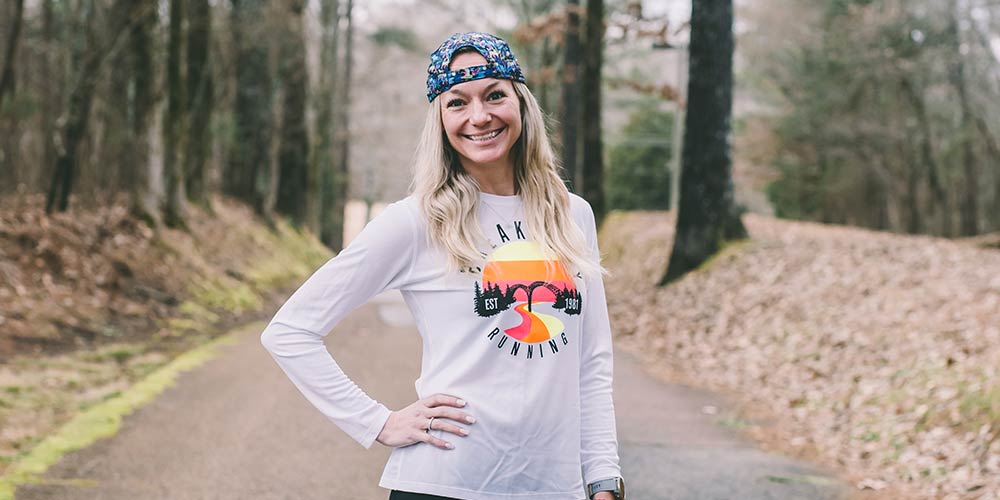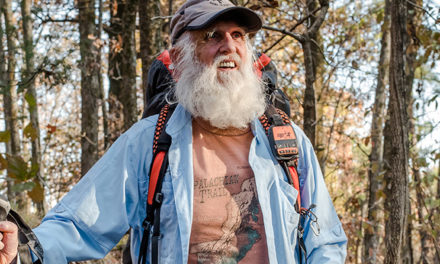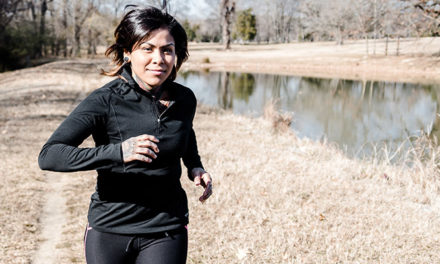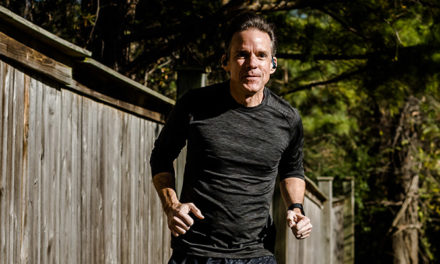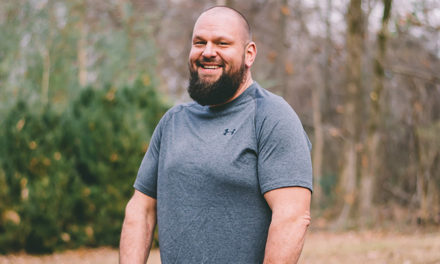As someone who ran track professionally in college, Gibson Kelley, 39, found herself with time to spare in the years following. What began with participating in local 5ks and 10ks eventually led the mom of two to finish as the first overall female in a 200-mile race.
When Gibson moved to Memphis seven years ago and joined local Breakaway Running’s group runs, the curious go-getter was encouraged by peers to try longer trail races, a pivot from her half-marathon and marathon road runs.
Beginning with 25ks, Gibson soon moved up to 50ks. Then, one day, running partner James Boler, 44, suggested they try a 100-miler.
“I said, what’s the worst that can happen? Let’s do it.”
“It’s always been about finding my limit. You don’t know where your edge is if you don’t keep looking for it.”
After completing three, difficult-terrain 100-milers, Gibson and James decided to try the low-grade Cowboy 200-mile race.
“When you get to those crazy distances, knowing that someone will be there with you is much more motivating,” Gibson comments on having a running partner.
“It’s about fostering consistency even on the days you’re not motivated.”
With that volume of mileage, safety is vital. Most of Gibson’s injury prevention comes from her bi-weekly gym cross-training sessions, which include single-leg strength activities such as squats, lunges, and calf raises.
“For me, a lot is about listening to my body. If something feels off, it’s not terrible to take a rest day. It will not completely derail your training plan.”
For a 100-mile race, Gibson begins training about 2 ½-3 months out and completes a few major running events per year while throwing in a few shorter 50ks.
To pass the time on long runs, Gibson opts out of headphones, preferring to chat with fellow runners and cycling through a mental checklist of how her body feels, running cadence, and taking in the beauty of race location terrains.
“It’s nice to see different parts of the country and appreciate them in a way you wouldn’t get to if you were just driving.”
From Nebraska’s scenic railroads and rivers to the sloping valleys of Georgia’s mountainsides, terrain races have made for some incredibly memorable experiences.
When fully loaded with two liters of water, energy gels, peanut butter packets, and honey sticks, Gibson’s running vest weighs about five pounds.
One of her favorite local training spots is the Wolf River Trail for its easy access.
“People have this weird assumption that you have to be clocking in tons of miles to be a runner. That’s not true. All you really need are a pair of tennis shoes to jog around your neighborhood for a mile.”
Most local shoe stores host free running groups catered to all paces. However, for aspiring runners who aren’t sure where to start, Gibson says, “Just give it a try and see what happens. If you continue to give it a shot, the bug will bite you eventually.”
By Shlomit Ovadia
Photo by Tindall Stephens

